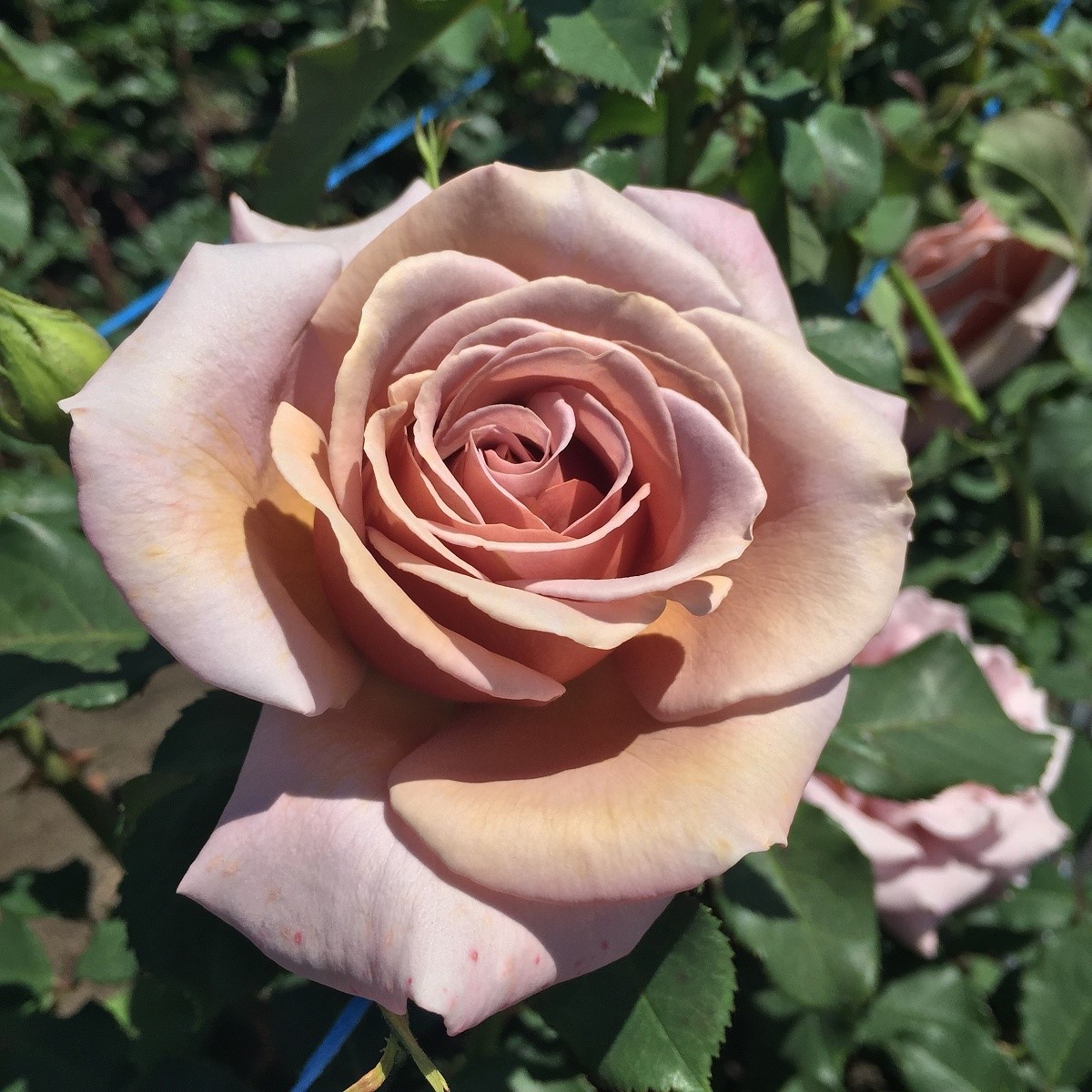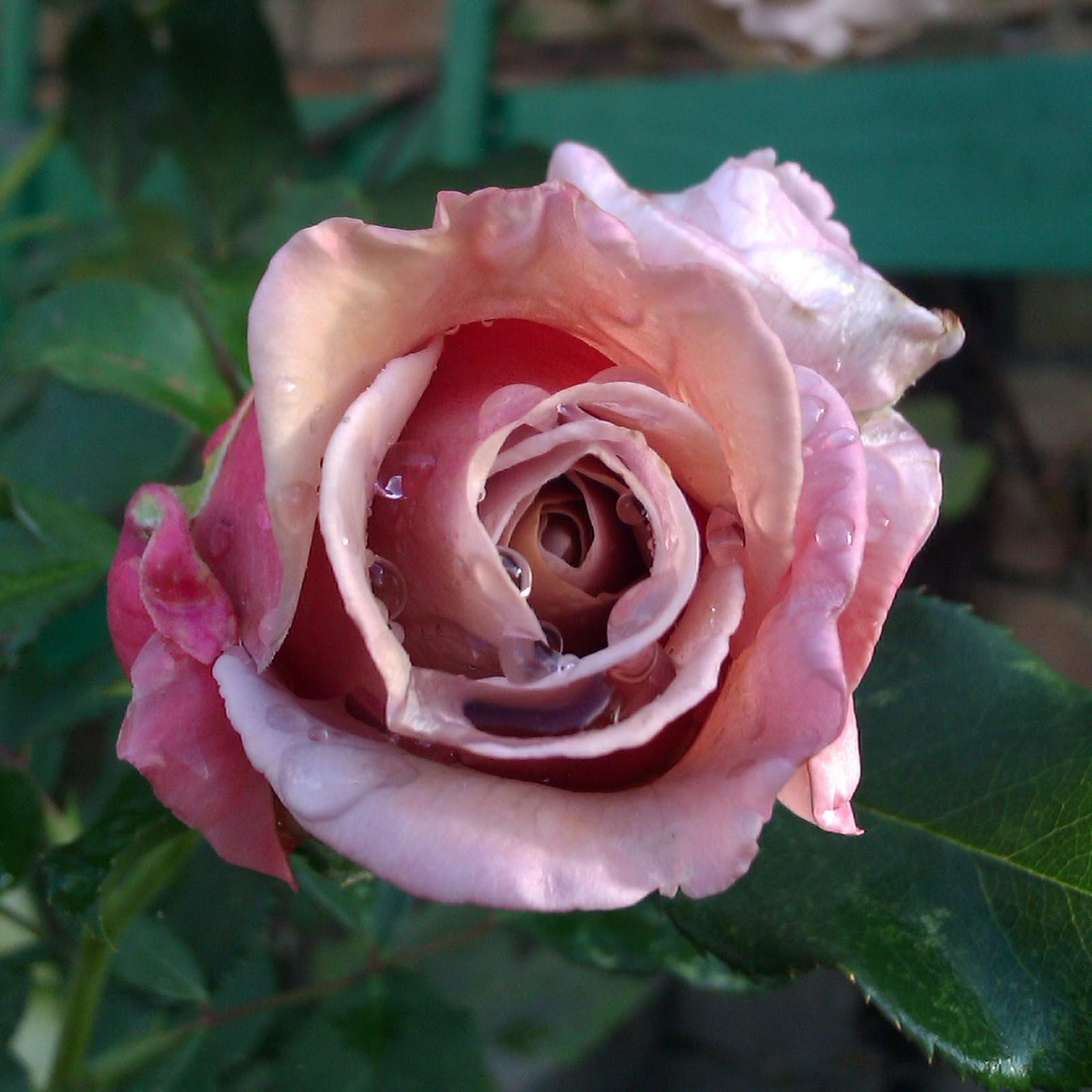Content
Rose Coco Loco is one of the most striking varieties. This is a modern variety bred by Western breeders. The unusual shade of the flower has become the hallmark of the plant. Thanks to this, the culture has found wide distribution among gardeners in different countries.
History of origin
The variety was created in the West. Botanical literature reveals the name of the originator and the year of breeding. The plant was born in the USA. The first mentions of it were made in 2009. The breeder was Christian Bedard. The creamy coffee color of the petals was achieved by crossing the hybrid tea golden and lavender-purple Blueberry rose.

Growing Coco Loco roses in the Urals or Siberia is best done only by experienced gardeners; problems can arise even among residents of the middle zone
Description of rose variety Coco Loco
The bush is small but dense. The buds are standard goblet-shaped. The leaves are medium in size and arranged quite frequently. Coco Loco is a double plant. Each flower contains up to 38 petals. At the beginning of life they have a milky hue, which turns into lavender as they open.When the bud reaches maturity, it turns chocolate.
However, the rose boasts not only an interesting palette, but also a shape. The flower reaches 10 cm in diameter. Once opened, it resembles a complex geometric structure. This is due to the large number of petals. The bud is formed on the shoot or forms an inflorescence (up to three flowers). Rose Coco Loco exudes a light aroma, slightly reminiscent of a tropical fruit.

Sometimes small red spots may appear on the petals, do not be alarmed, as this is a natural color
The variety grows up to 80 cm in width and reaches about 90 cm in height. In appearance, the plant looks neat, so it is suitable for both planting in a flower bed and for open cultivation. One of the main advantages of culture is resistance to external conditions. Under the influence of rain and sun, the petals remain as beautiful as in favorable weather.
Attention! Rosa Coco Loco is having difficulty overwintering. When cold weather sets in, the owner will have to take care of the shelter. The plant can withstand temperatures as low as -24 °C, but it should not be allowed to reach this point.
Hybrid tea rose Coco Loco prefers soil that is loose and accessible to sunlight. At the same time, the culture is afraid of drafts. For the sake of lush flowers, Russian gardeners are ready to put up with all the difficulties.
The rose blooms for three months, starting from June and ending in August. While observing, you can see how Coco Loco independently changes colors. This is not due to external factors. A similar metamorphosis is characteristic of the entire variety.

Coco Loco begins to bloom in early summer
Under suitable conditions, the rose can bloom twice in a season, but this privilege is only available in the southern regions.
The variety has good immunity, characteristic of all tea varieties. This allows you to grow the plant without any difficulties. Pests disturb the rose more often, but this can be dealt with on your own.
Advantages and disadvantages
Rose Coco Loco is a godsend for the gardener. The plant is notable for its decorative properties and strong immunity.

If you look closely, the flowers show a shift between pink, white and yellow
Pros:
- resistance to external influences;
- the color of the petals does not depend on the weather;
- good immunity;
- continuous flowering;
- resistance to fungal diseases.
Minuses:
- insufficient winter hardiness.
Features of cultivation
Coco Loco is bred in the south of Russia. If you wish, you can grow a rose in the middle zone. To do this, you will have to carefully monitor the bush and cover it for the winter. The work is carried out in autumn or spring. The culture loves to come into contact with the sun, so you should not plant it near the house or under the canopy of a tree.
To avoid stagnation of liquid, it would be good to place Coco Loco on a hill. First of all, dig a hole. For this, a hole of 50x50 cm is enough. Fertilizers are placed on the bottom (acidity within 6 points). You can use humus, peat and wood ash. Next, lay a layer of broken bricks and begin planting.

The variety looks especially beautiful after morning dew or light rain
A young plant needs constant care. Roses love to drink, so they are watered at least once a week. For each bush, 1.5 liters of liquid is enough.After the temperature drops, moisturize once every two weeks using 750 ml of water. In October, watering is stopped to avoid the formation of ice.
For normal growth it is necessary that the soil is as loose as possible. That’s why you need to properly form the soil before planting.
Feeding is needed for Coco Loco roses to bloom long and well. They begin to be introduced in the second year after planting. There is nothing unusual in this regard. Coco Loco needs the same fertilizers as other roses.
The variety belongs to floribundas and is not afraid of pruning. Experts advise leaving three buds on each shoot. Haircuts are carried out in the spring. At the same time, frozen and deformed branches are removed.

The color of the Coco Loco rose changes during different stages of flowering
You need to understand that Coco Loco is not the most winter-hardy variety. In Russia, the plant requires shelter for the winter. The shoots are trimmed, leaving up to 30 cm. To improve ventilation, it is advisable to loosen the top layer of soil. The bushes are treated with antifungal agents. Roses can be covered with a tarpaulin, various types of agrofibre or a simple hut.
Reproduction methods
The plant can be propagated by seeds or cuttings. The latter is more often practiced, since this method is simpler and gives faster results. To do this, lignified cuttings are cut off, making the bottom cut at an acute angle. The cuttings should not be more than 10 cm. They are placed in a hole with sand and covered with a bottle. After the sprout has formed, the cover can be removed.
Pest and disease control
Rose Coco Loco may suffer from necrosis. Symptoms may include dark spots on the leaves. The cause of wilting is often root rot.The disease is accompanied by the appearance of brown or cherry spots. Less commonly, the crop is exposed to cancer and cracks.

Disease-affected areas of the Coco Loco rose must be burned before the infection reaches the rest of the plants.
The best prevention is moderate watering. By spring, painful shoots are removed and the rose is sprayed with fungicides. This must be done before the buds swell. The work is carried out with sharp instruments, such as a knife, after disinfection. After propagation by cuttings, the cutting sites are treated with charcoal.
Pests of Coco Loco are:
- spider mite;
- aphid;
- leaf roller;
- scale insect.
The rose is protected with broad-spectrum insecticides. Supplements based on potassium and phosphorus will help improve immunity.
Attention! In August and subsequent months, you need to abandon nitrogen-containing fertilizers.
Application in landscape design
The culture is good for both single and group planting. Coco Loco looks ideal when creating landscape compositions. Designers recommend using the plant together with other rose bushes. The variety looks sophisticated against the background of red flowers.

It is necessary to take into account the changeability of the color of the Coco Loco rose; when planting with other plants, this phenomenon can play a cruel joke
When planting in a group, it is better to choose early-flowering crops so that everyone has enough nutrients. You can emphasize originality by combining it with sage and lavender. Such a garden will become a place where you will want to spend all your free time.
Conclusion
Rose Coco Loco is a sophisticated crop suitable for planting in any region of Russia. Care requirements may vary at different latitudes, but the reward for your efforts will be lush flowering. This variety does not lose its decorative properties even after heavy rains.
Reviews of rose Coco Loco








